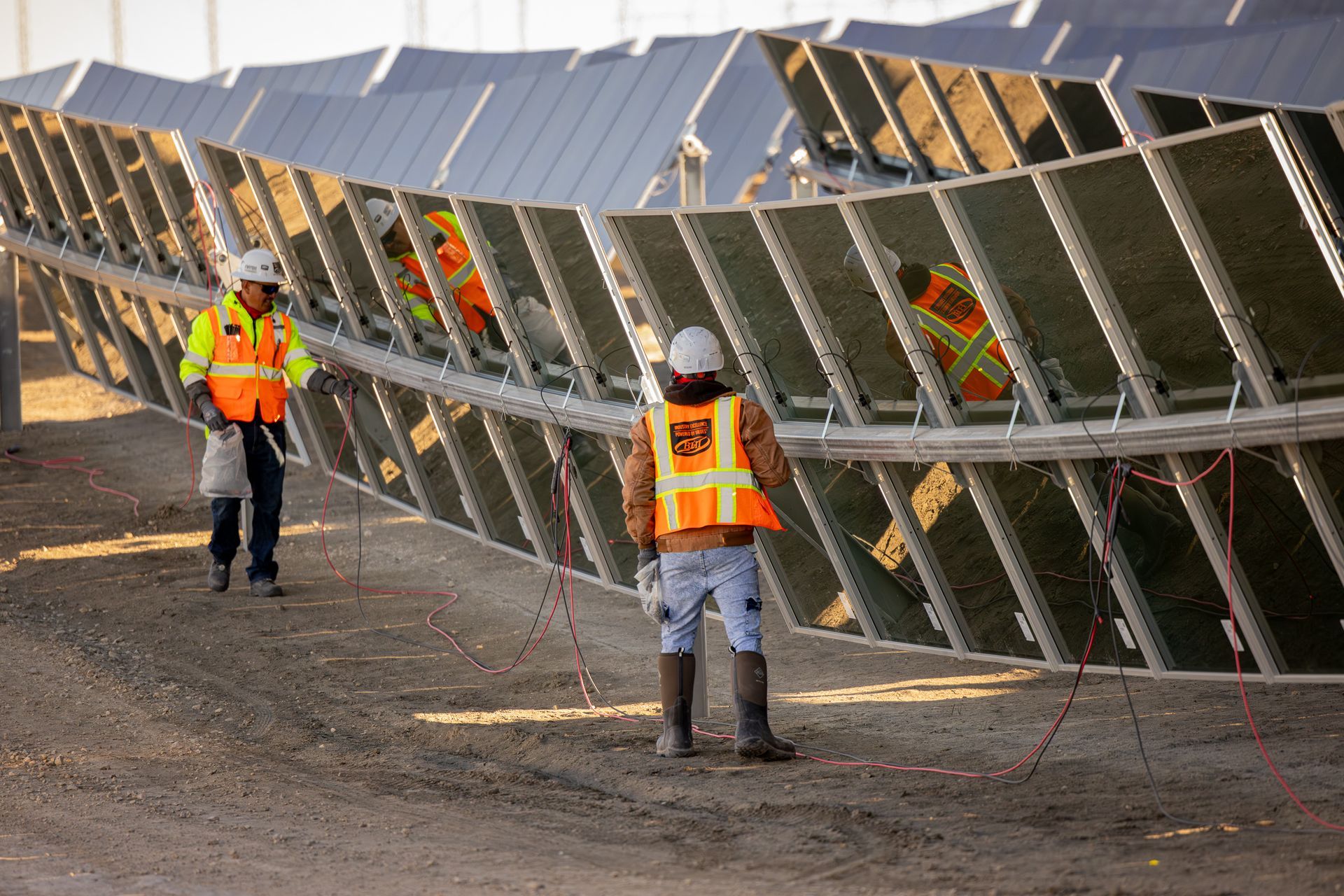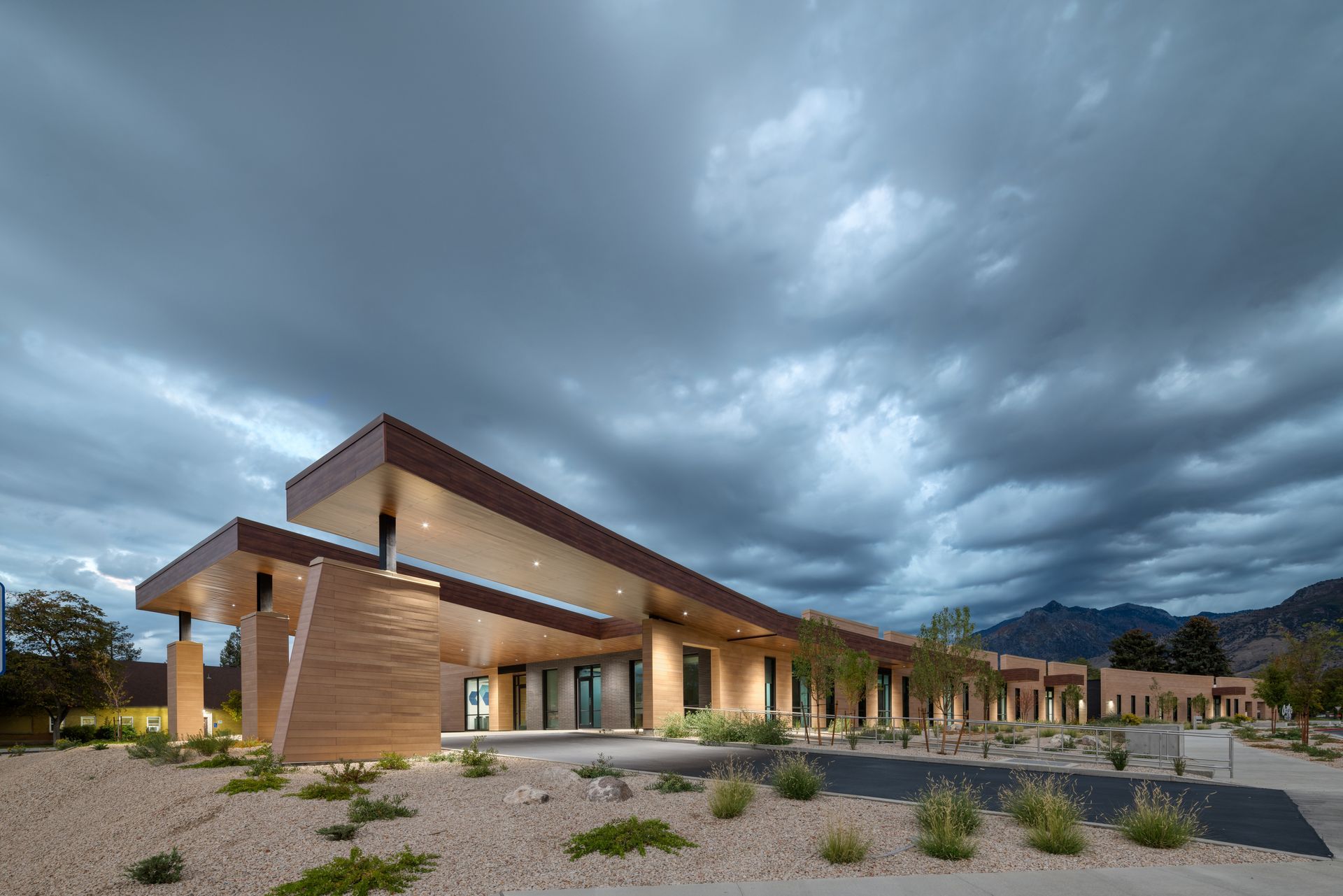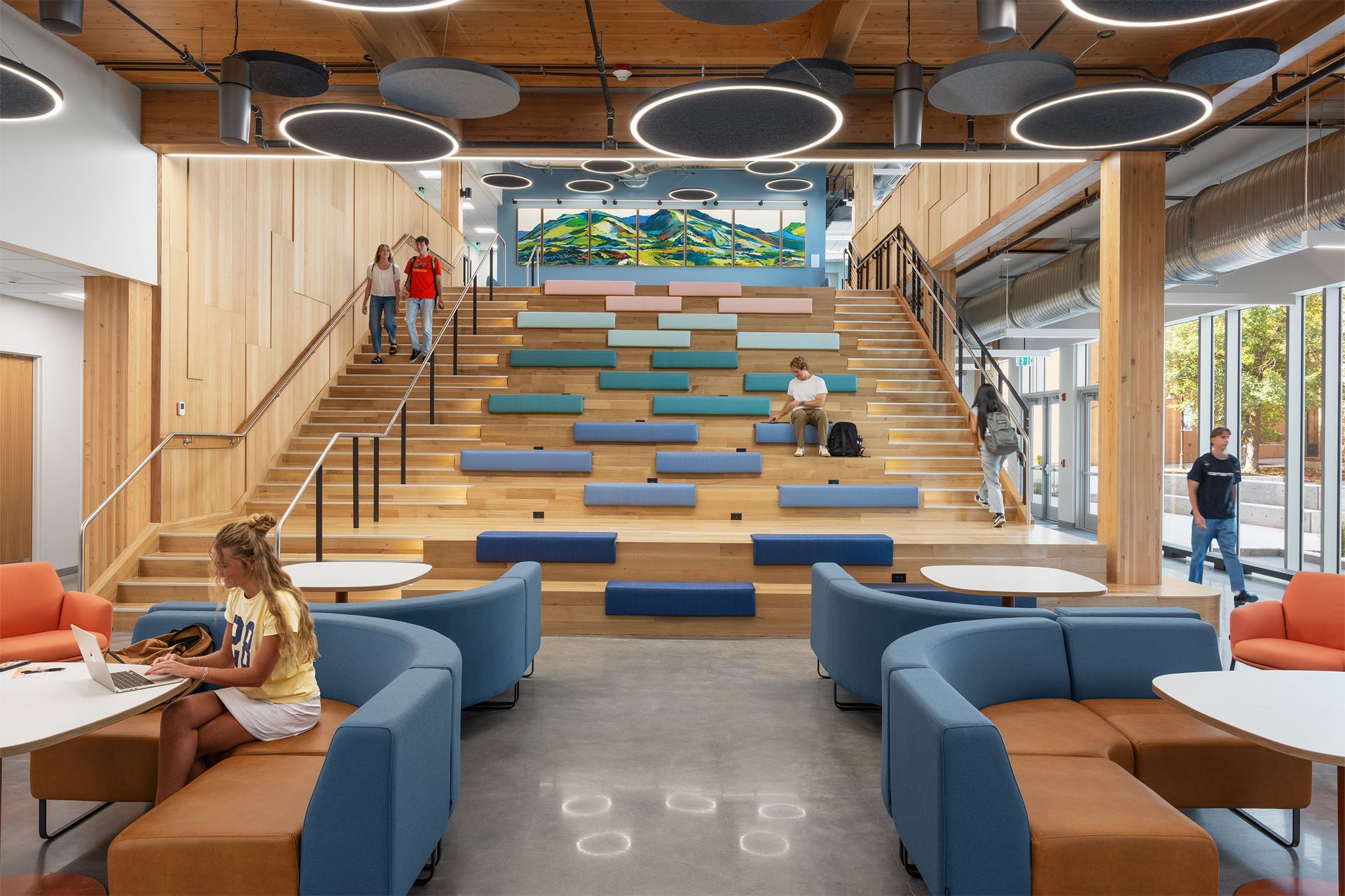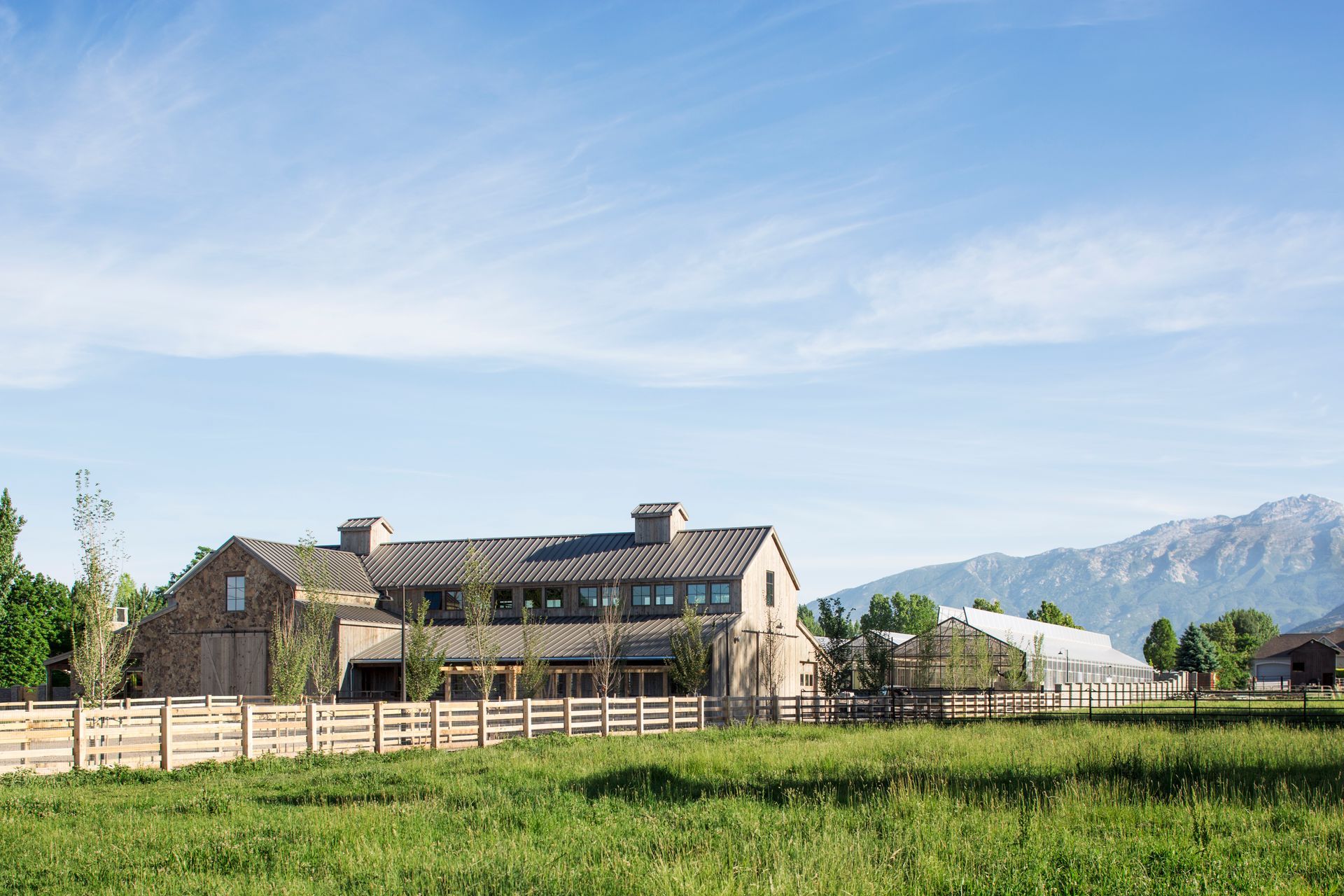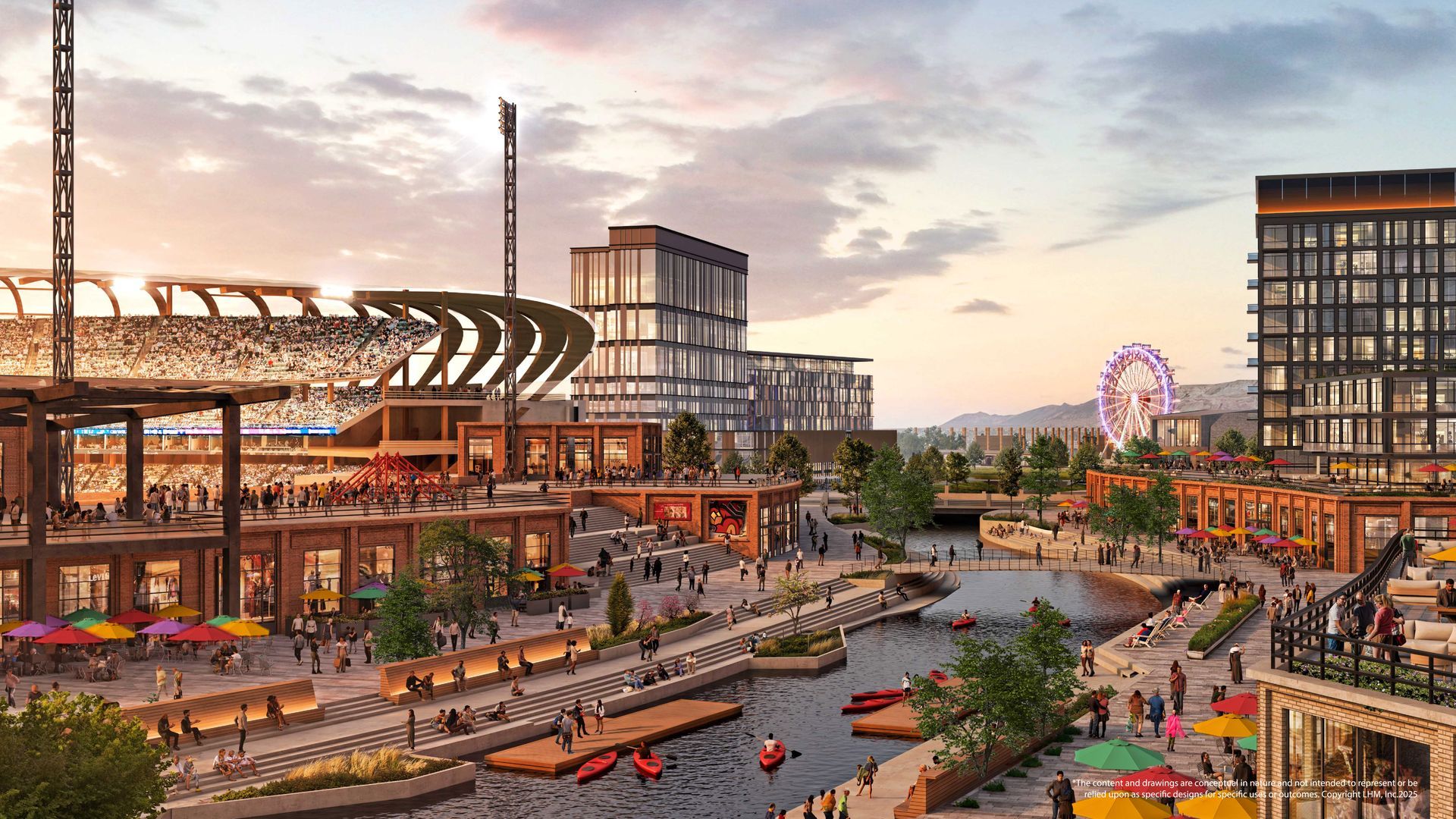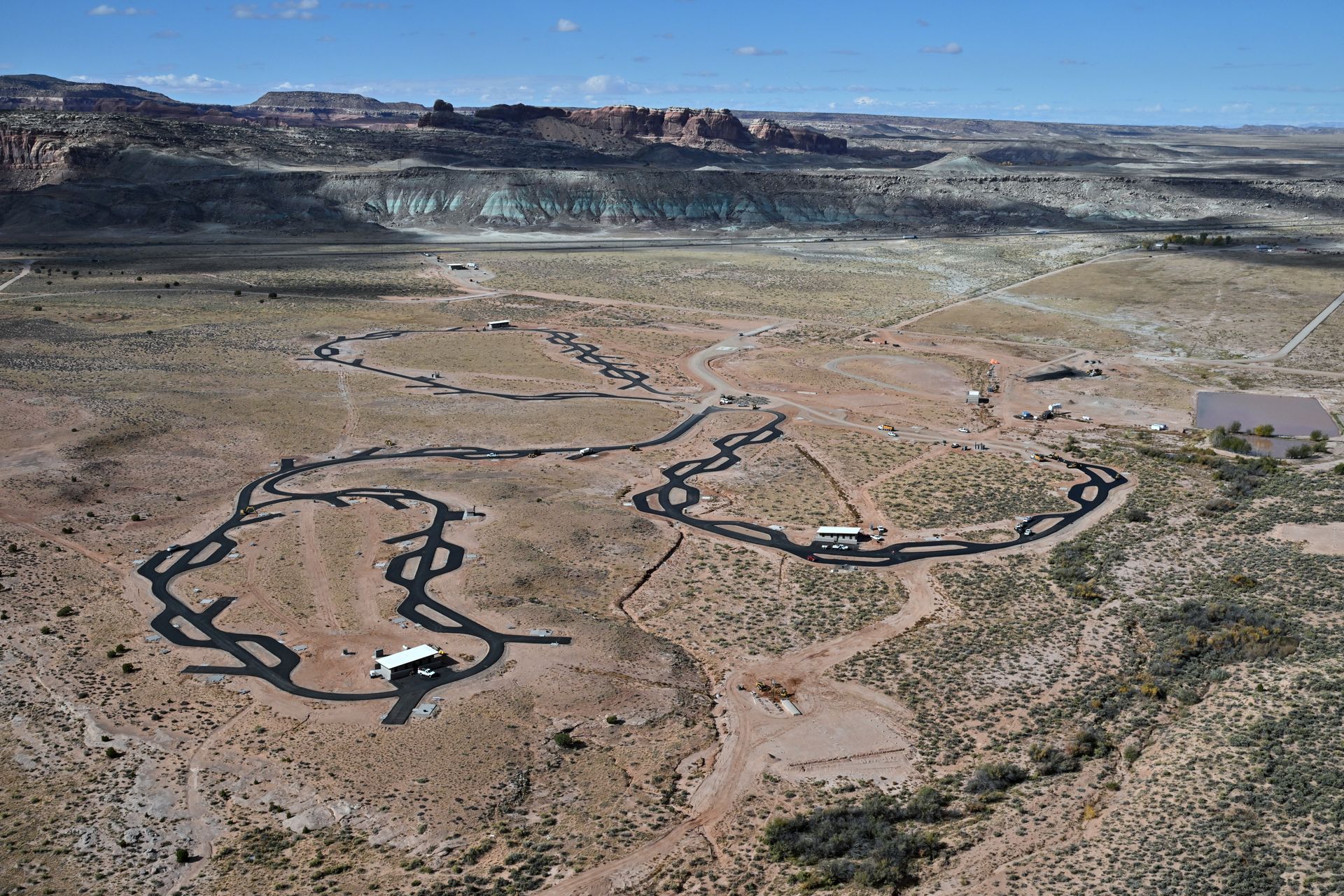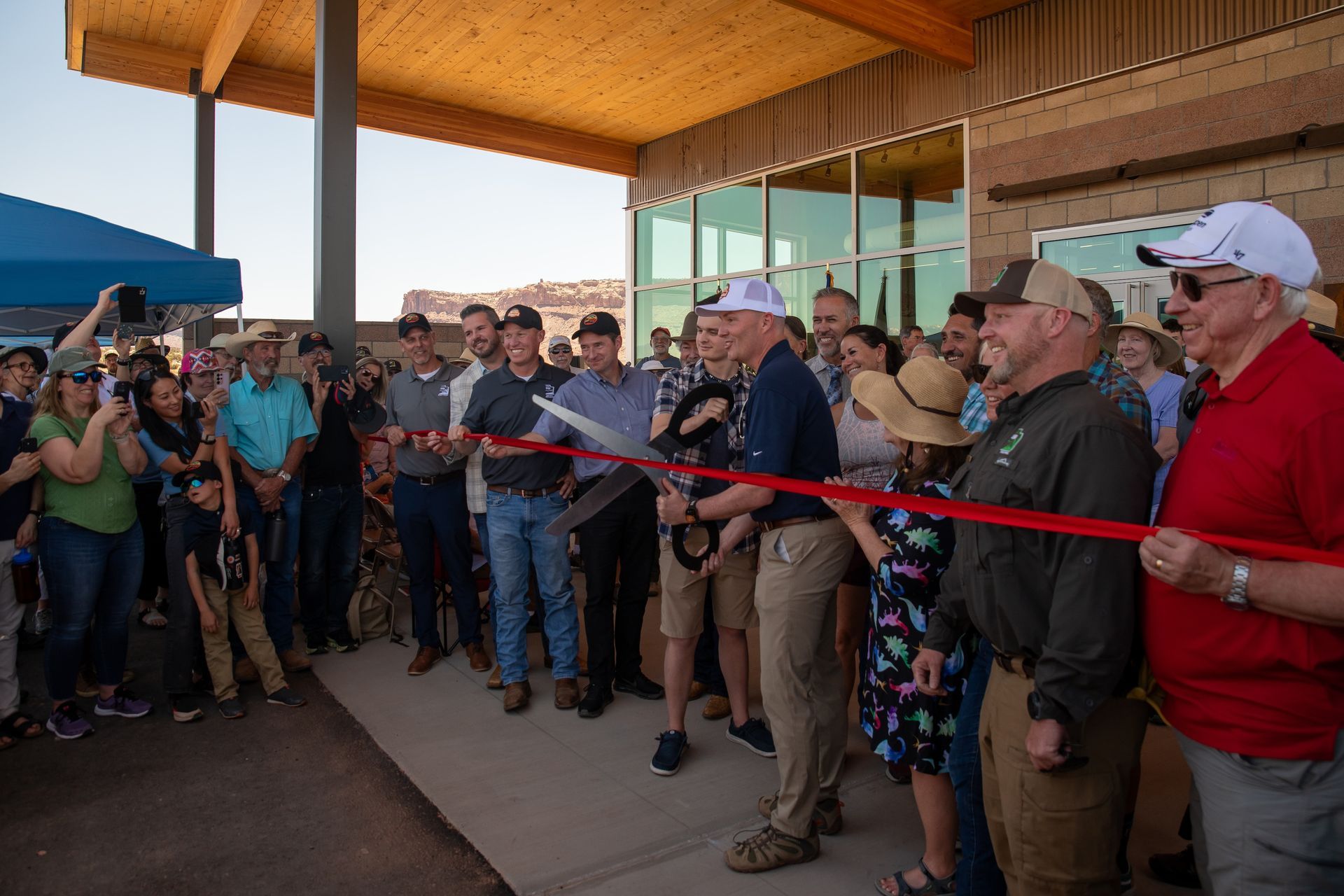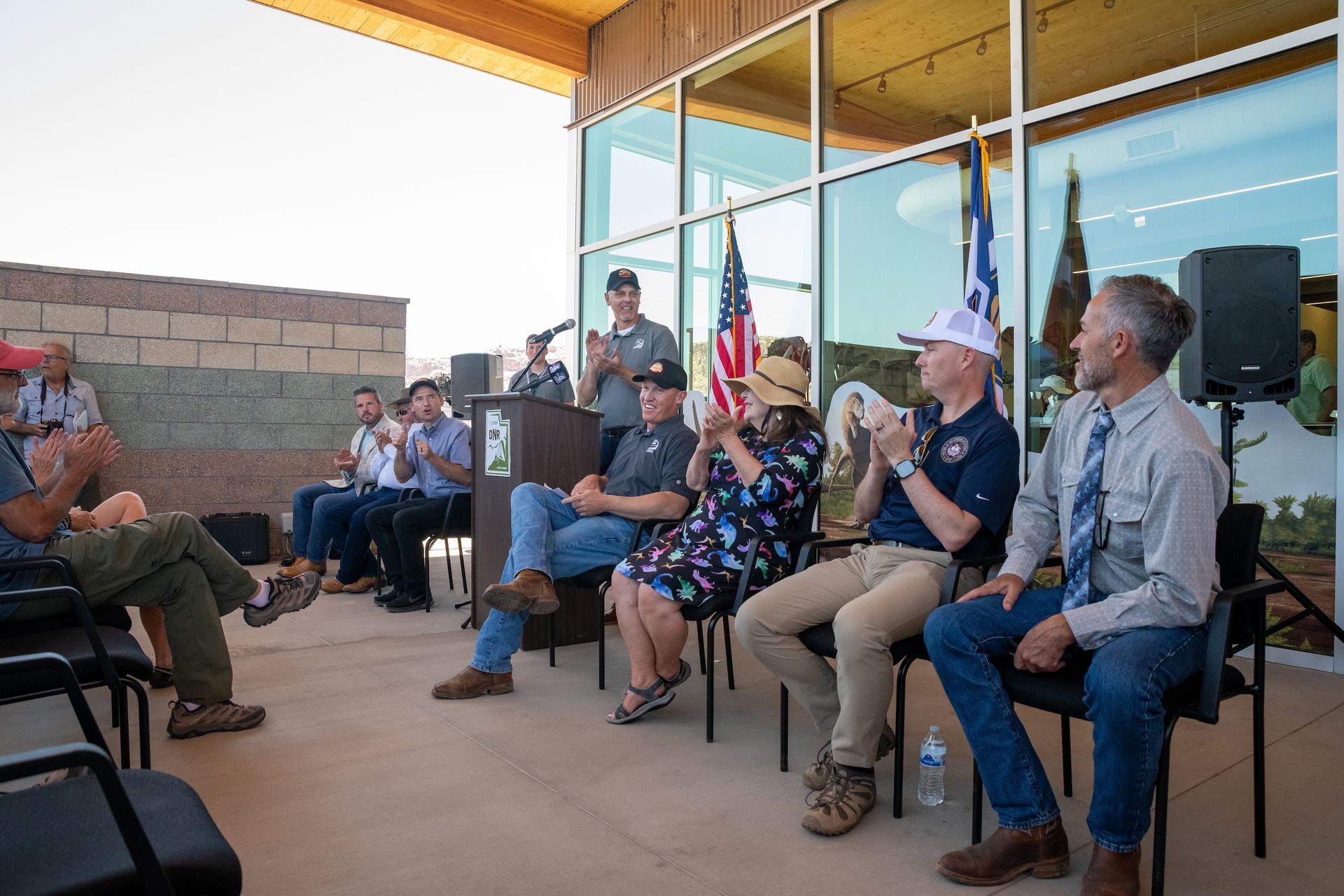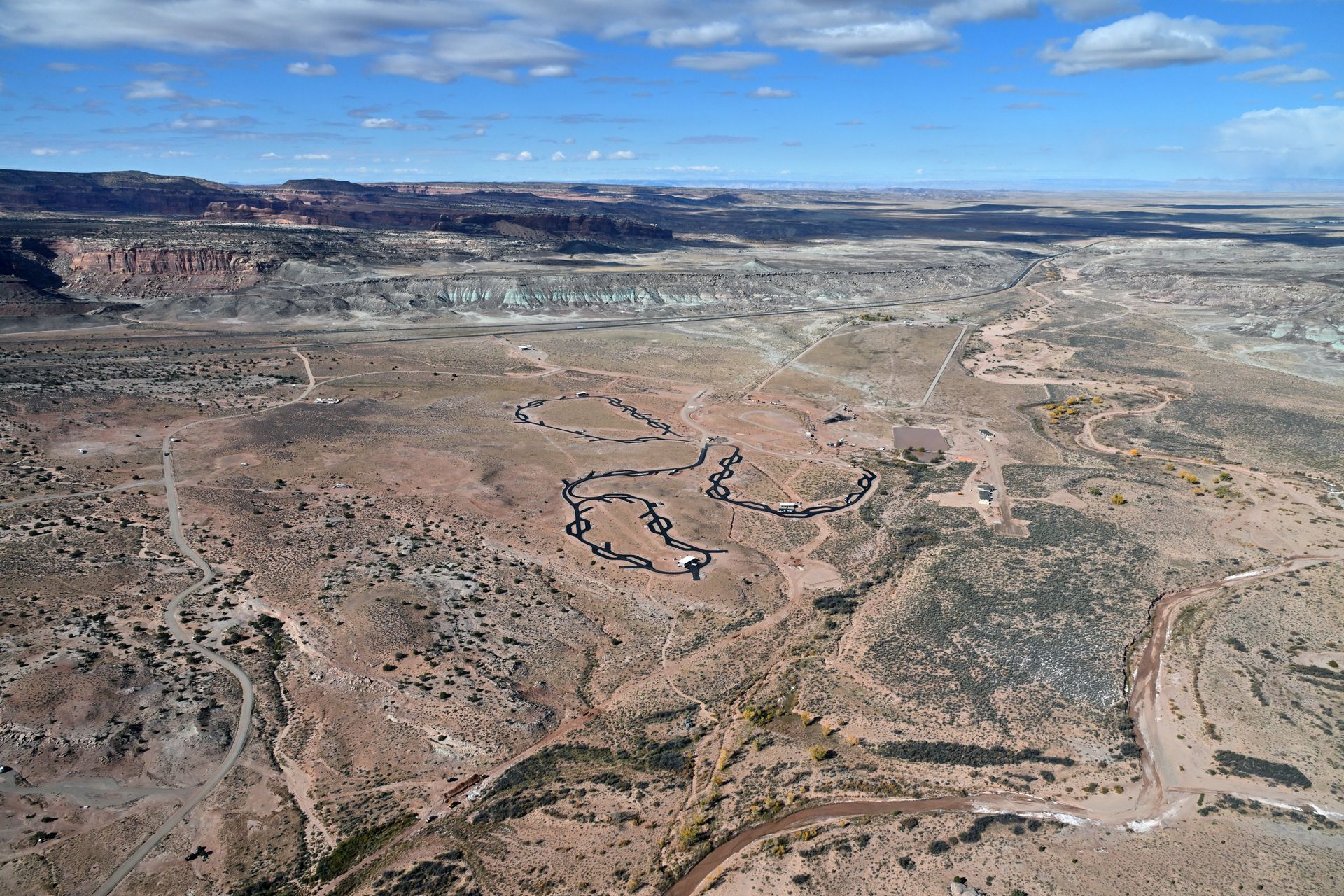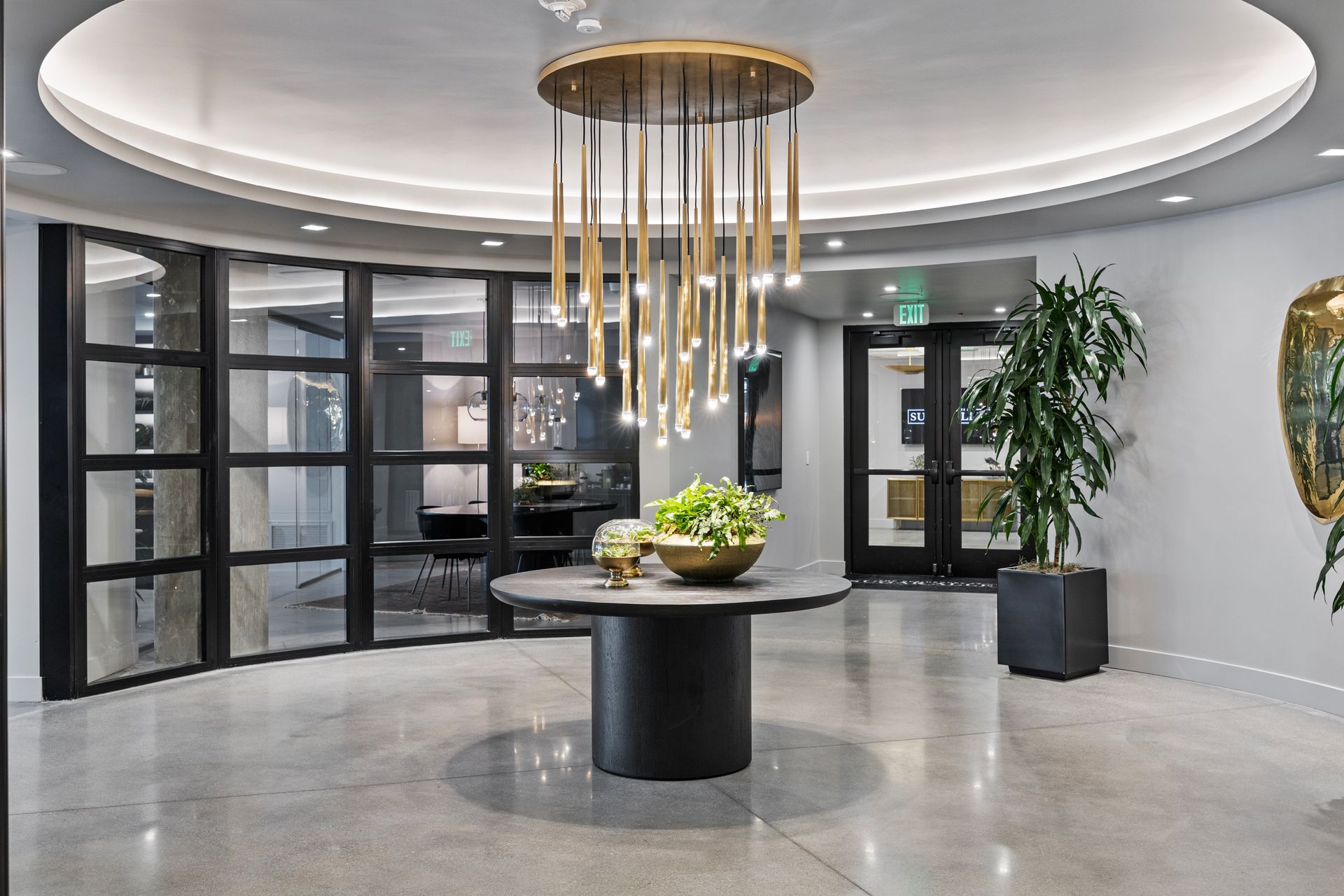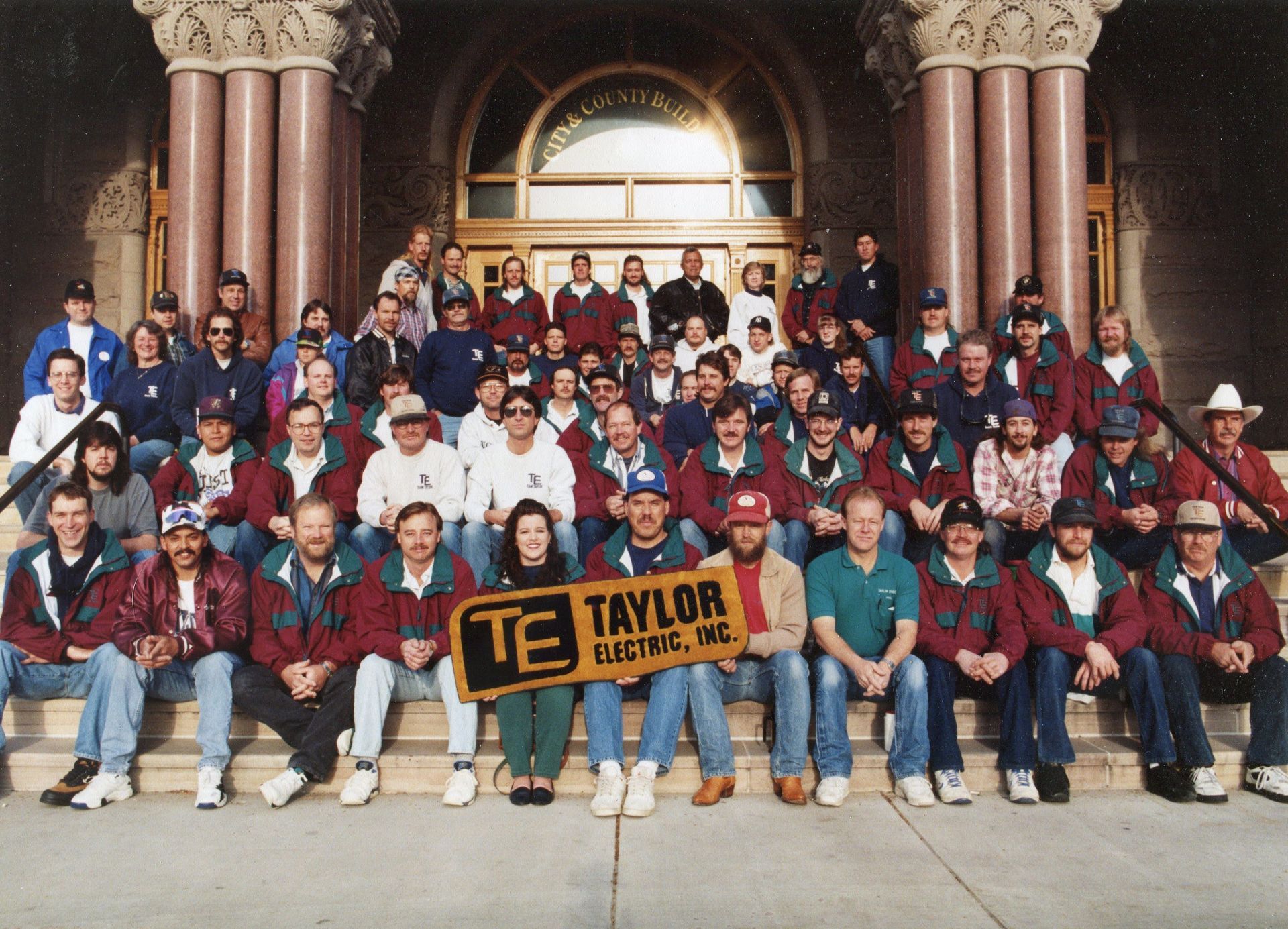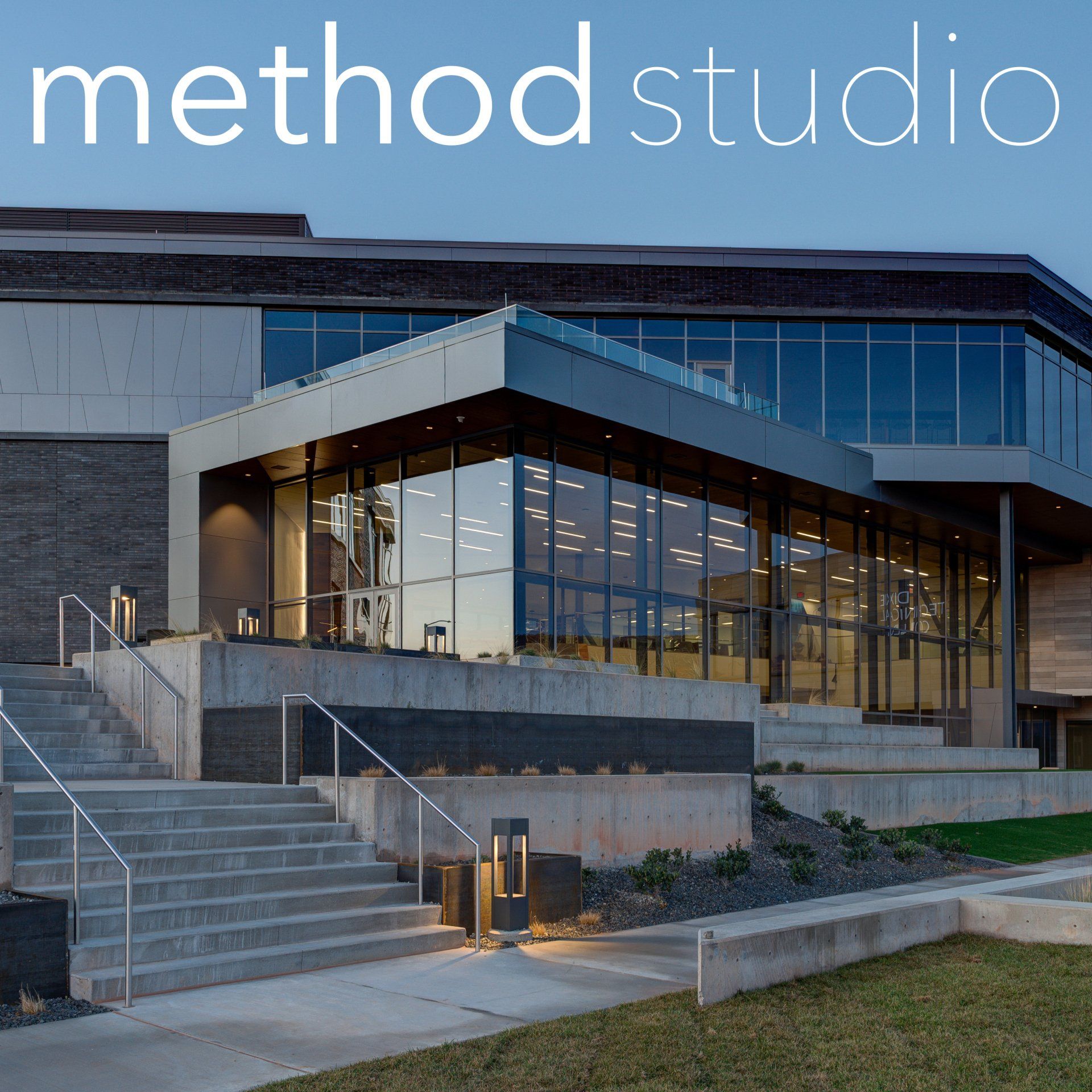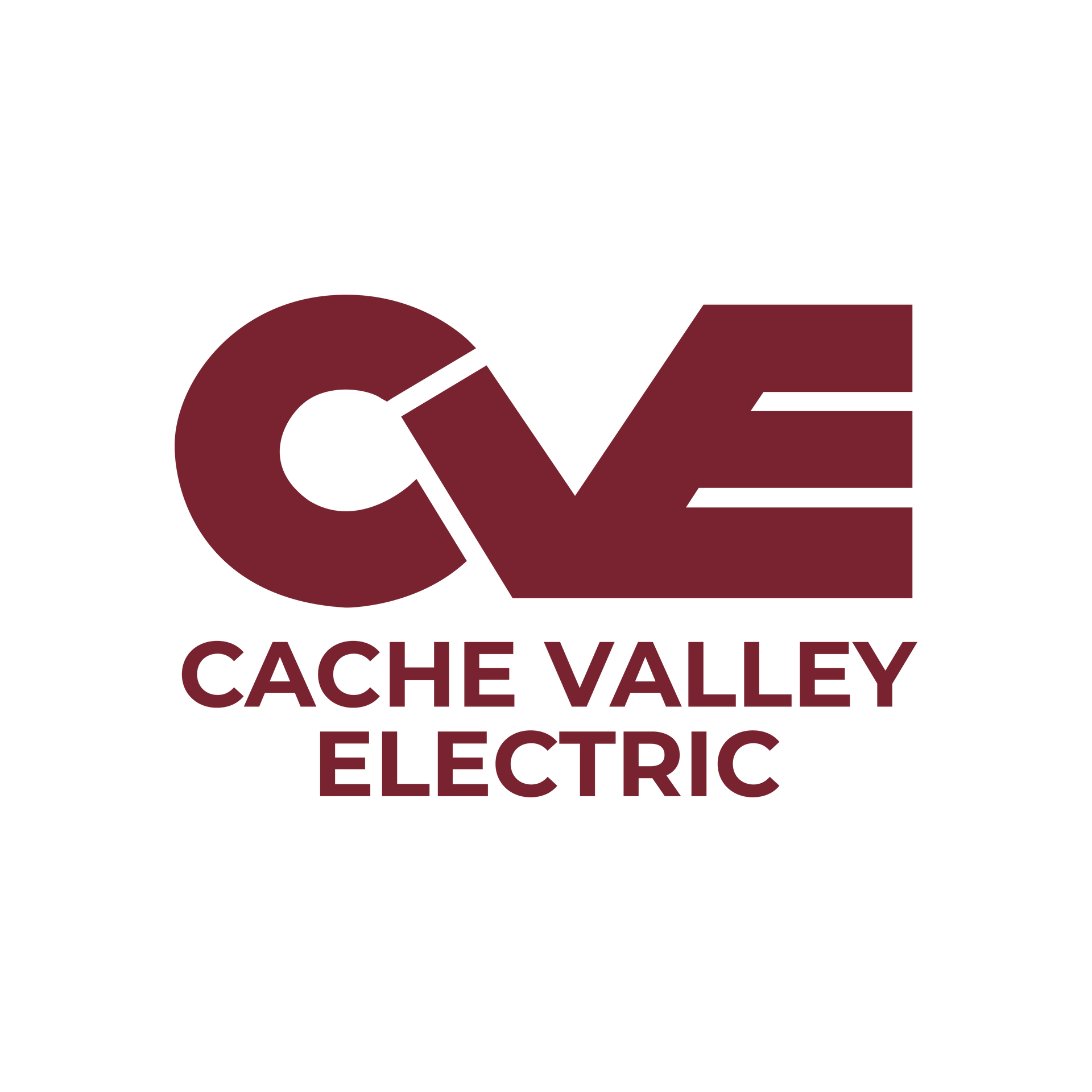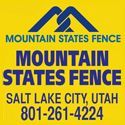Utah’s newest state park emerged outside of Moab from the close collaboration of an intentional design team and a solutions-oriented construction team. By Taylor Larsen
Remote Area Proves Challenging for Construction
As design emphasized the remote nature of the site, construction executed the vision 15 miles from Moab’s majestical gateways. Getting dirt bikers, campers, and other recreationists to the area is a cinch. Getting construction labor to Moab was a different story, according to Scott Christiansen.
“Getting folks there to work was a huge challenge,” said Christiansen, Sr. Project Manager with Hogan. He detailed that, even with previous efforts to develop a construction presence there—the award-winning Utah State University Moab building in 2022 is a prime example—“The workforce is still limited there.”
According to Boyer, the CM/GC delivery method and close collaboration with Hogan split trade scopes to bring in smaller contractors and give them more chances to succeed and help the project meet schedule.
“A key to these remote projects is to have as much qualified subcontractor involvement as possible from local areas,” said Boyer. Not only does it save on costs, “it helps invest in local communities. And there is a sense of pride, workmanship, and craftsmanship that is associated with the project, knowing they worked on a project close to home.”
The Hogan team advertised across the rest of Grand County, to Richfield in central Utah, and even further south in Blanding, and then west to St. George. Even still, most of the trade partners, Christiansen said, came from the Wasatch Front. Christiansen praised all of those who came to work on Utahraptor State Park, especially the work of Eagle Mountain-based Excavation Kings, who Christiansen labeled as “tremendous” for their work on the sewer/water scopes for the park.
Two flash floods damaged the site and complicated the earthwork scope. According to Johansen & Tuttle Engineering Principal Jonathan Johansen, the sand cliff topography of the area meant little absorbed the over 700 cubic feet per second of water that flowed across the site during each storm, very much affecting construction.
“We had two inches of water in less than an hour,” said Christiansen of the downpour. “We and the State of Utah had made provisions for [flash floods], and enough contingency built into the GMP to cover improvements, but it still damaged what we were doing.”
A silver lining was that comprehensive improvements went into the site to help with stormwater mitigation. Johansen detailed how berms and ripraps were added after the storms to provide another fortification against future flows. Widened drainages and additional grouted riprap helped protect and complement the three sizeable concrete dip road crossings in the large drainages.
Building Infrastructure and More
As earthwork continued, water-related challenges remained, like getting adequate water for the park.
Boyer said the lack of quality water and water pressure from the original well site proved to be a challenge. After two separate drills, the team found good water quality, quantity, and flow underneath the aquifer that feeds Arches National Park. The project team drilled to 1,600 feet to access the water, sealed it so the above aquifer could continue supplying Arches National Park, and piped water from the lower aquifer to the 80,000-gallon tank inside the project’s water treatment and distribution building over a mile from the drill site.
Development for a new state park called for 61 developed campsites with water and electric access, three restroom buildings, a pump house, and housing units for the park manager and staff, as well as housing for the Utah Highway Patrol. The visitor center contains a full-scale model Utahraptor in its Cretaceous-period glory.
Both existing Grand County roads, Dalton Wells and Willow Springs Roads, were previously used for remote camping and recreation access. Christiansen said that construction worked hand in hand with Grand County's need to keep access to both roads while opening up construction-specific access that would serve as a single entry in the future.
Design and construction teams planned 27 “primitive” or undeveloped campsites for those looking to “rough it” on Utahraptor State Park’s 7,480 total acres. Construction teams worked during area downtimes to build the primitive campsites—with a gravel surface, picnic table, and fire ring—to be ready as soon as possible. Completing these sites early was a welcome development for the travelers that recreate in this expanse of Grand County. Said Christiansen, “Campers were there in the undeveloped campsites—as many as 40 and as few as two—but all through construction.”
New Park Ready for Visitors
Christiansen said opening day for the park couldn’t come soon enough for the locals who he spoke to on trips into town.
“Everyone told me how excited they were to have that park,” he said.
Boyer was, too. “I love the Moab area. My family loves the Moab area,” he said. “I'm a big mountain bike enthusiast, and anytime you get to tell your kids or your family that you were part of the creation of a new state park, it is something special.”
They’re not the only ones. Rayner, a Utah native and camping enthusiast, said that work on projects like Utahraptor State Park and others hold a special place in her career for what they mean for the architecture and how it can dovetail so perfectly by respecting nature’s living vibrancy.
“I have always valued the opportunities we have in Utah to experience unspoiled nature,” she said. “The addition of architecture brings attention to this scientifically and historically significant place but cannot overshadow it.”
Today, the park is ready for visitors with 50 miles of trails taking them to see thousands of Jurassic-era and Cretaceous-era fossils, family heirlooms donated from the Japanese Americans interned in Dalton Wells, and the immense natural beauty. Utahraptor State Park celebrated a ribbon cutting on May 23rd and officially welcomed the public to enjoy a beautiful new tribute to the area’s ancient, recent, and natural histories.
Utahraptor State Park
Location: Moab, UT
Cost: $33 Million
Delivery Method: CM/GC
Size: 7,480 total acres
Project Team
Owner: State of Utah DFCM, Utah State Parks
Design Team
Architect: GSBS Architects (housing and structures)
Civil: Johansen & Tuttle Engineering
Electrical & Mechanical: Spectrum Engineers
Structural: Horrocks
Geotech: RB&G Engineering
Landscape: Horrocks
Construction Team
General Contractor: Hogan & Associates Construction
Concrete: Wall Concrete Construction
Plumbing: Redd Mechanical
HVAC: Redd Mechanical
Electrical: Cache Valley Electric (electrical site backbone)
Lyle Northern Electric (building electrical)
Masonry: Basin Masonry
Drywall: Wall Board Specialties
Acoustics: Golder Acoustics
Painting: Hegemann Paint
Tile/Stone: WESTEC
Carpentry: Ron J. Peterson Construction
Flooring: Wall2Wall Flooring
Roofing: Artistic Roofing & Exteriors
Glass/Curtain Wall: Midwest D-vision Solutions
Waterproofing: Bonneville Caulking & Waterproofing
Steel Fabrication: Fineline Steel Fabrication
Steel Erection: Hogan & Associates Construction
Excavation & Demolition: Nielson Construction & Materials, Excavation Kings
Landscaping: Ward Landscape
